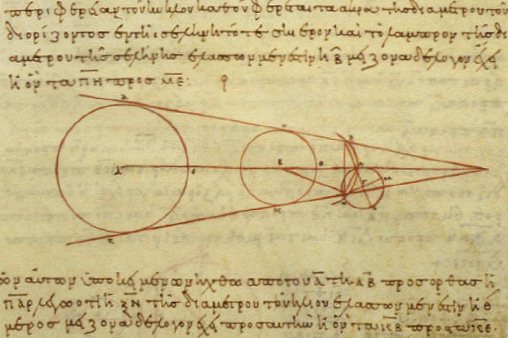We are
bounded in a nutshell of Infinite space: Blog Post #13, Biography
#1: Aristarchus, the first Heliocentrist
After
the time of Aristotle and Plato, much of the Ancient Greek astronomical
tradition was supplanted by Aristotelian principles. But in reality, many of
the Ancient Greek scientists were closer to the truth than the principles
Aristotle and other philosophers of his age would postulate, which would remain
as the dominant ideas of the universe for centuries to come. With men like Democritus,
Thales, and Anaximander, the so called Ionian scientists preserved an ideal
that was closer to a modern view of the scientific method than that which the
Athenian philosophers maintained. However, with the third century BCE more and
more individuals arose that followed a more scientific approach to the
description of the physical world.
One
such man is Aristarchus of Samos, the first known proponent of the heliocentric
model of the solar system and the one who calculated the sizes of the Moon and
Sun to a degree of accuracy remarkable for his lack of precise instruments. He
lived from 310 BCE to 230 BCE, working in Samos and publishing several works,
of which only one has directly survived, On
the Sizes and Distances of the Sun and the Moon, which shows his estimates
and measurements of the Sun and Moon, as inaccurate as they may be. Here, he
used not much other than his sight to estimate angles and use geometry to reach
an approximation of the sizes of these objects in comparison with the Earth. Some
of these estimates are rather close to actual values, while others are
completely disparate from the known values (such as the sun being 20 times
larger than the Earth, when it is actually 400 times larger).
Nevertheless,
Aristarchus is referenced in Archimedean books which relate how he was among
the first to ever postulate that the Earth orbits the Sun, as well as the
hypothesis that the universe is much more than just a solar system, rather it stretches
out to where there are stars (like the sun) farther away and others are nearer.
His theory, overall, was the understanding that the universe stretched out into
the heavens, and he also thought that distant stars had a parallax, but too
small to be seen with the instruments of his time.
In
all, Aristarchus was among the first to truly begin to wonder about the greater
scheme of the universe. He was among the first to question the geocentric model
and begin to see a simpler view of the movements of heavenly bodies.
Reference: http://www.britannica.com/biography/Aristarchus-of-Samos
Photos taken from: https://upload.wikimedia.org/wikipedia/commons/2/2b/Aristarchus_working.jpg & https://upload.wikimedia.org/wikipedia/commons/9/98/Aristarchos_von_Samos_%28Denkmal%29.jpeg

.jpeg)
So he was like, the father of Copernicus!
ReplyDeleteI’ve always wondered at this brightness/angle/position-by-eye business. What kind of instruments did they have in his time?
5